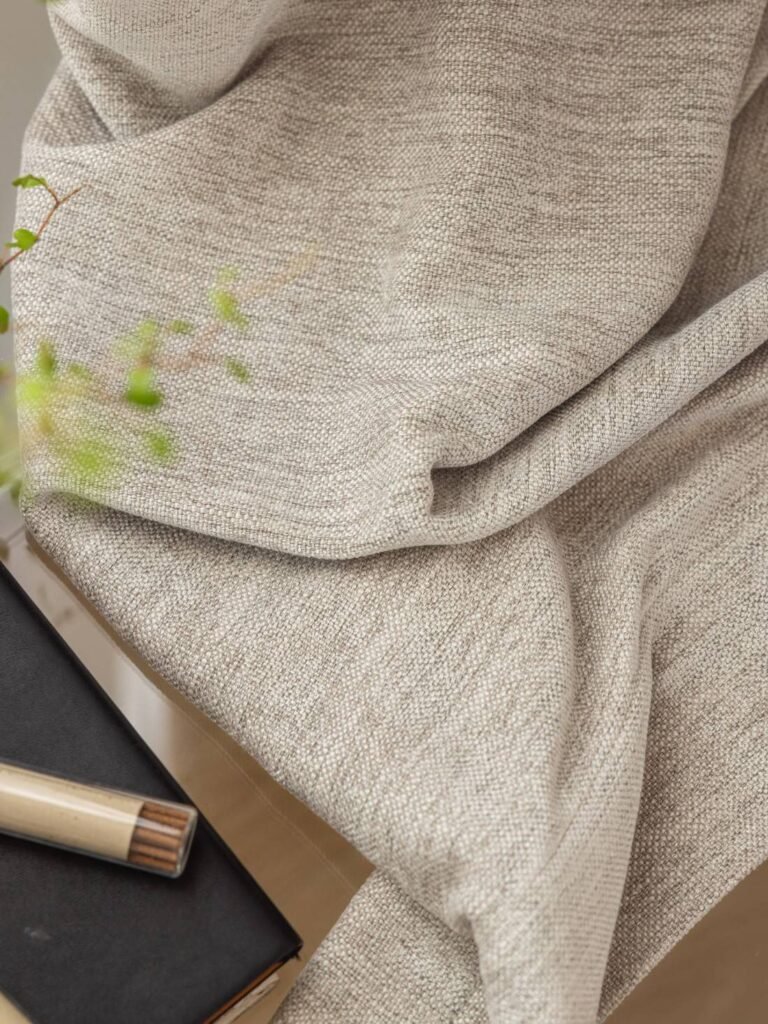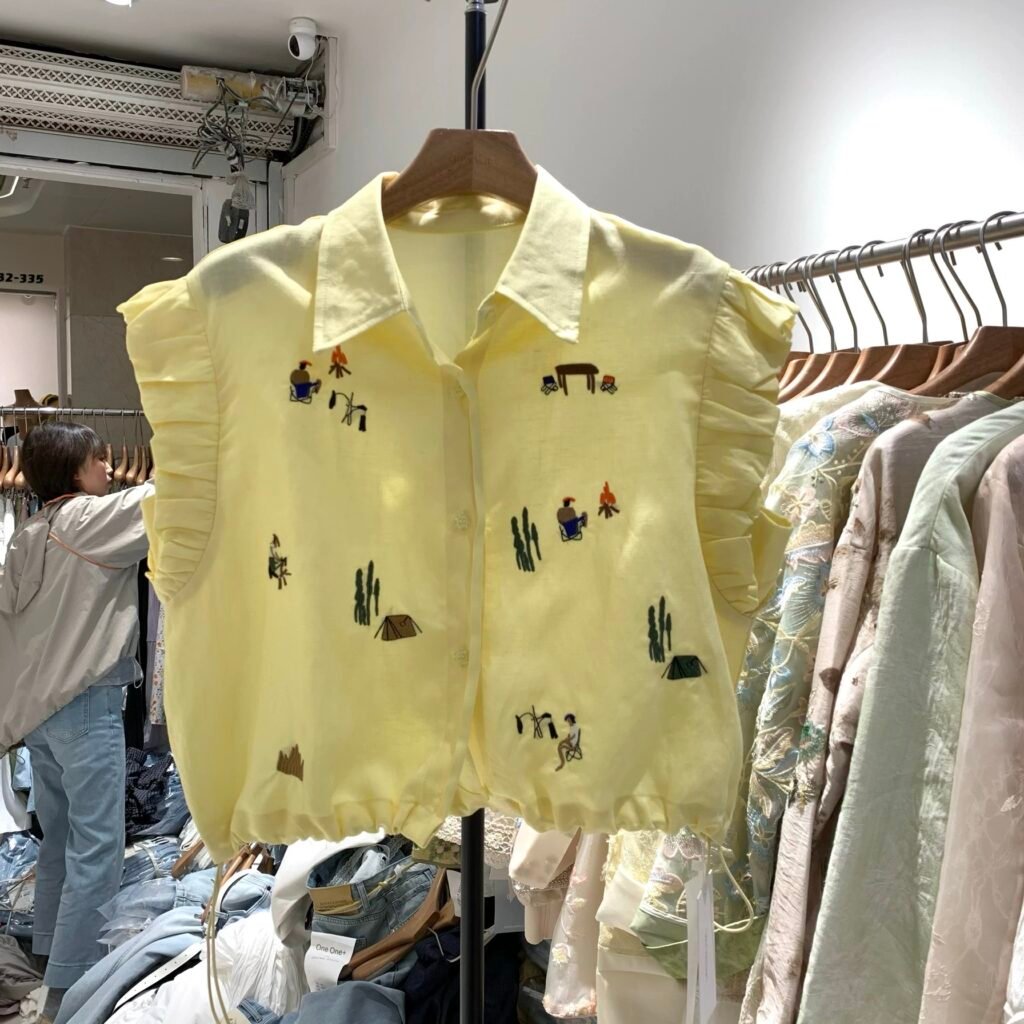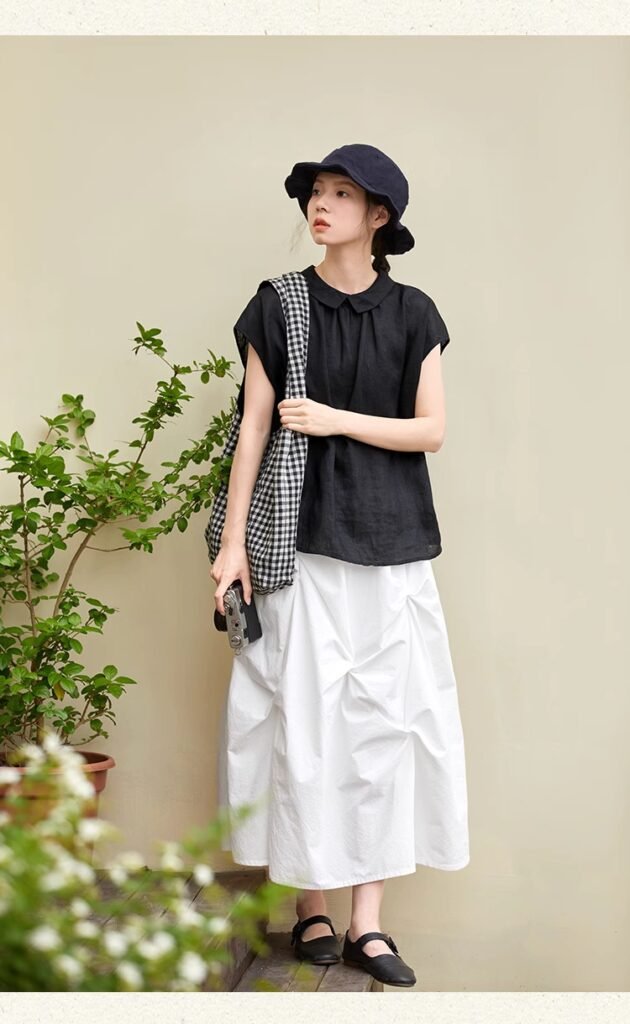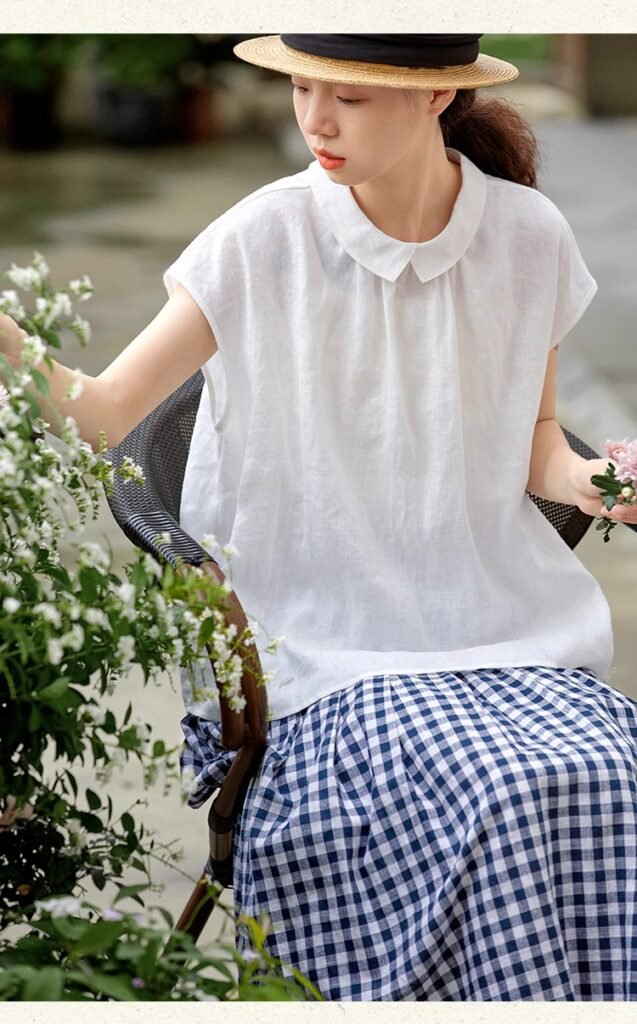
Linen shirts have surged from classic summer staples to year-round wardrobe heroes—and savvy brands know that sourcing the right supplier makes all the difference between a bestseller and a showroom shelfwarmer. What key vetting steps ensure you partner with a linen-shirt factory that delivers quality, ethics, and on-time delivery—every time? demand best-in-class fiber metrics, inspect production capacity firsthand, verify eco-certifications, audit QC protocols, and confirm transparent communication and logistics. Picture signing a deal with a supplier only to discover your poplin wrinkles like tissue paper—your margins vanish faster than you can say “reeded weave.” Let’s dive into the eight critical checkpoints that separate hitmakers from heartaches.
What Fiber and Fabric Quality Standards Should You Require for Linen Shirts?
Establishing fabric quality benchmarks up front is non-negotiable. Your supplier should furnish High Volume Instrument (HVI) test reports showing flax fiber staple lengths of 30–40 mm, micronaire values of 3.8–4.5, and tensile strength ≥350 N, plus fabric lab data confirming 180–220 g/m² weight, 60 EPI × 40 PPI weave, and OEKO-TEX® Standard 100 Class I certification. This ensures shirts that drape beautifully, endure wash after wash, and arrive free from harmful residues.
Fiber & Fabric Standards
Flax Fiber Metrics
- Staple Length (SL): 30–40 mm for minimal weak spots and smooth yarns.
- Micronaire (MIC): 3.8–4.5 balances fineness and maturity, enabling even dye uptake.
- Tenacity (N): ≥350 N in warp and fill ensures tear resistance during cutting and sewing.
Yarn & Weave Specifications
- Yarn Count: 20–30 Ne ring-spun linen yarn optimizes softness.
- Weave Density: 60 EPI × 40 PPI plain or twill for balanced hand and durability.
- Weight: 180–220 g/m² delivers structure without stiffness.
Chemical & Safety Certifications
- OEKO-TEX® Standard 100 Class I: Tests for 350+ harmful substances—safe for infant-contact.
- GOTS (if blended): ≥70% organic linen with vetting on chemicals and labor practices.
- REACH Compliance: No SVHCs above thresholds (e.g., <0.1% formaldehyde).
Lab & Mill Documentation
- HVI Reports: Flax fiber data from the gin stage.
- Fabric Test Reports: Tensile, abrasion (ISO 10545 Martindale ≥15,000 cycles), pilling (ISO 12945 Grade ≥3).
- Mill Traceability Sheets: Batch numbers linking fabric rolls to raw-bale origins.
| Parameter | Target Range | Test Standard |
|---|---|---|
| Staple Length (mm) | 30–40 | HVI |
| Micronaire | 3.8–4.5 | HVI |
| Tensile Strength (N) | ≥350 | ASTM D5034 |
| Fabric Weight (g/m²) | 180–220 | ISO 3801 |
| EPI × PPI | 60 × 40 | In-line loom sensors |
| Abrasion (cycles) | ≥15,000 | ISO 12947 / Martindale |
| Pilling Grade | ≥3 after 5,000 rubs | ISO 12945 |
| OEKO-TEX® Class | Standard 100 Class I | OEKO-TEX® |
Beware suppliers touting high thread counts but using subpar yarns—fabric density without fiber quality leads to harsh hand and early breakdown. Always cross-verify HVI fiber data with fabric lab tests for consistency.
How Do You Assess a Supplier’s Production Capabilities and Capacity?

Volume, lead-time reliability, and technical prowess all hinge on the supplier’s machinery, staffing, and process control. Top linen-shirt suppliers operate dedicated weaving lines (≥4 rapier looms), in-house ring-spinning (500 kg/day capacity), automated cutting-sewing lines producing 1,000 shirts/day, ERP tracking, and ISO 9001 certification—ensuring agile scaling and consistent on-time performance.
Production Capacity Evaluation
Machinery & Technical Infrastructure
- Spinning Mills: Ring-spun capacity ≥500 kg/day, U% ≤10%.
- Weaving Lines: Minimum 4 rapier looms, EPI/PPI precision controls ±2%.
- Cut-Sew Workshops: Automated spreaders, 30–50 sewing machines with inline inspection.
Workforce & Skill Levels
- Operator Ratios: ≤5:1 garment-worker to machine ratio indicates efficient staffing.
- Skill Certifications: Supervisors trained in Six Sigma or Lean Textile Manufacturing.
Process Control & Traceability
- ERP/MRP Systems: Real-time order tracking, raw-material inventory alerts.
- In-Line QC Stations: GSM, EPI/PPI, shade matching at every 200 m roll interval.
Capacity & Scalability Metrics
- Monthly Output Potential: ≥50,000 m of fabric and 20,000 shirts.
- Peak Season Buffer: 20% capacity reserved for rush orders without lead-time slippage.
- Sample Turnaround: 7–10 days for first-article garment prototypes.
| Capability Metric | Benchmark | Why It Matters |
|---|---|---|
| Spinning Capacity (kg/day) | ≥500 | Ensures yarn supply stability |
| Loom Count | ≥4 rapier looms | Sustains fabric output |
| Shirt Production (pcs/day) | ≥1,000 | Meets bulk order requirements |
| ERP Integration | Real-time tracking | Minimizes miscommunication |
| QC Intervals (roll length) | Every 200 m | Maintains fabric consistency |
| ISO 9001 Certification | Active | Indicates process standardization |
| Sample Lead Time (days) | 7–10 | Speeds development cycle |
Suppliers claiming large capacities may under-invest in maintenance, leading to unplanned downtime. Request uptime records (≥95%) and maintenance schedules to gauge true reliability.
Which Certifications and Compliance Documents Prove Ethical and Eco-Friendly Sourcing?

Your vetting isn’t complete without verifying a supplier’s environmental and social credentials. Reputable linen-shirt suppliers hold OEKO-TEX® Standard 100 Class I for baby-safe textiles, GOTS certification (≥70% organic fibers), Fair Trade or Fair for Life audits for labor practices, and EU REACH compliance—ensuring every shirt meets stringent chemical, environmental, and ethical standards.
Certification & Compliance
OEKO-TEX® Standard 100 Class I
- Scope: Tests for over 350 harmful substances, including heavy metals, formaldehyde, and allergenic dyes.
- Renewal Cycle: Annual on-site mill audits and random product retesting.
Global Organic Textile Standard (GOTS)
- Fiber Requirements: ≥70% certified organic linen, up to 30% certified organic sustainable fibers (e.g., Tencel®).
- Processing Bans: Prohibits PVC, harmful phthalates, and heavy metal mordants.
Fair Trade / Fair for Life
- Social Compliance: Guarantees fair wages, safe working conditions, community development premiums.
- Traceability: Farm-to-factory audit trails ensuring premiums reach growers.
EU REACH & Local Chemical Regulations
- SVHC Limits: No substances of very high concern above 0.1% by weight.
- Registration & Safety Data Sheets (SDS): Full chemical inventories with risk assessments.
Additional Eco Seals
- EU Ecolabel: Limits on water/energy use, wastewater treatment quality.
- Cradle-to-Cradle Bronze/Silver: Assesses material health, recyclability, and manufacturing impact.
| Certification | Main Criteria | Renewal / Audit Frequency |
|---|---|---|
| OEKO-TEX® Standard 100 Class I | ≤350 harmful substances; baby-safe limits | Annual on-site audits |
| GOTS | ≥70% organic fiber; banned chemicals list | Annual certification |
| Fair Trade / Fair for Life | Fair wages; social premiums | Biennial social audits |
| EU REACH | SVHC <0.1%; full SDS disclosure | Ongoing regulatory updates |
| EU Ecolabel | Low impact on water, energy, emissions | Every 3 years |
Multiple certifications look impressive, but each adds cost (5–15% per seal). Prioritize those most trusted by your end customers to avoid “certification clutter” and diluted brand messaging.
What Quality Control Processes Are Essential During Sampling and Bulk Production?

Robust QC at every stage prevents costly recalls and ensures consistency across hundreds or thousands of shirts. Best-in-class suppliers implement multi-stage inspections—fabric roll QC (GSM, shade, defects), first-article garment checks (fit, seam integrity), and pre-shipment audits (AQL sampling at 2.5%)—supported by digital inspection reports that you can review before delivery.
QC Protocols
Incoming Fabric Inspection
- GSM & Weave Density: Every roll measured, tolerance ±2%.
- Shade Matching: Delta E ≤1.0 against master swatch under D65 lighting.
First-Article Garment (FAG) Approval
- Fit Samples: Two to three sizes produced to confirm grading accuracy.
- Seam & Stitch Tests: Seam strength ≥15 N (ISO 13935), stitch density 10–12 stitches/inch.
In-Line Production Checks
- Inline QC Stations: Fabric defect detection & 100% cuff/hem shade check at every 200 m.
- Operator Self-Checks: Workers log weekly checks on pressure foot, tension settings.
Pre-Shipment Final Audit
- AQL Sampling: 2.5% defect acceptance for critical faults; 4.0% for major.
- Lab Testing: Random garments sent for wash test, shrinkage check (<3%), and colorfastness wash rub (Grade ≥4).
Digital QC Reporting & Transparency
- Real-Time Dashboards: Live defect rates, roll counts, and batch history accessible via supplier portal.
- Photo/Video Evidence: Visual records of shade checks and seam inspections for each batch.
| QC Stage | Checks & Tolerance | Standard / Frequency |
|---|---|---|
| Fabric Roll Inspection | GSM ±2%, Delta E ≤1.0 | Every roll |
| First-Article Garment | Fit sample; seam ≥15 N; 10–12 SPI | Once per style |
| In-Line QC | Defect catch; shade check | Every 200 m |
| Pre-Shipment Audit | AQL 2.5% critical / 4.0% major | Per lot |
| Lab Performance Tests | Shrinkage <3%; wash fastness ≥4 | Random 5% of batch |
Overly stringent AQLs can slow production and inflate rejection costs. Work with suppliers to set realistic tolerances matched to your brand’s risk tolerance and customer expectations.
How Should You Evaluate Minimum Order Quantities, Lead Times, and Pricing Tiers?

Understanding a supplier’s commercial terms is vital to ensure your margins and launch schedules stay on track. Top linen-shirt suppliers typically set MOQs of 300–500 meters for standard plain-weave fabrics, offer smaller trial runs of 50–100 meters for custom colors or finishes, and quote lead times of 20–30 days for bulk fabric plus 10–15 days for garment production. Tiered pricing often provides 5–10% discounts at 1,000–2,000 meters and 10–15% above 5,000 meters.
Commercial Terms
Minimum Order Quantity (MOQ) Structures
- Standard Fabric Runs: 300–500 m MOQ for core neutrals and bestsellers.
- Custom Dye/Finish Trials: 50–100 m MOQ at a slight premium.
- Garment MOQs: 200–300 pcs per style for finished shirts.
Lead Time Breakdown
- Fabric Production: 20–30 days, including weaving, dyeing, and finishing.
- Sample Development: 7–10 days for initial fabric swatches; 14–21 days for first-article garments.
- Bulk Manufacturing: 10–15 days after sample approval, depending on complexity.
Pricing Tiers & Discounts
- Base Rates: \$6–\$8 per meter for 180–200 g/m² plain-weave linen.
- Tiered Discounts: 5% off at ≥1,000 m; 10% off at ≥2,000 m; 15% off at ≥5,000 m.
- Garment Surcharge: \$4–\$6 per unit for cut-and-sew, depending on design complexity.
| Commercial Term | Range / Tier | Implication |
|---|---|---|
| Fabric MOQ | 300–500 m; 50–100 m (trials) | Balance inventory vs. testing |
| Garment MOQ | 200–300 pcs per style | Ensures production viability |
| Fabric Lead Time | 20–30 days | Plan seasonal launches |
| Sample Lead Time | 7–10 days (swatch); 14–21 days (FAG) | Speeds approval cycle |
| Pricing Tier 1 | Base \$6–\$8/m | Small collection runs |
| Pricing Tier 2 | 5% discount at ≥1,000 m | Moderate growth |
| Pricing Tier 3 | 10–15% discount at ≥2,000–5,000 m | Scale economies |
While low MOQs and rapid turnaround appeal to small brands, frequent small runs can erode margins due to setup fees. Strive for a balance between product variety and batch efficiency—consider consolidating SKUs or sharing runs with complementary brands.
Which Communication and Project Management Practices Ensure Smooth Collaboration?

Clear, consistent communication is the glue that holds a successful supplier partnership together. Leading suppliers adopt dedicated account managers, weekly progress calls, shared project boards, and real-time ERP access—enabling instant updates on fabric stock, production status, and QC results, and ensuring swift resolution of any issues.
Collaboration Frameworks
Dedicated Point of Contact
- Account Manager: Single liaison for all queries, reducing miscommunication.
- Backup Contacts: Technical and logistics specialists available for escalations.
Regular Status Updates
- Weekly Calls: Review current orders, upcoming milestones, and potential roadblocks.
- Monthly Review: Strategic planning for upcoming seasons and capacity forecasting.
Shared Project Management Tools
- Task Boards: Visual tracking of sample approvals, production stages, and shipping schedules.
- Document Repositories: Centralized storage for specs, lab reports, and design files.
Real-Time Data Access
- ERP Portal: Live inventory levels, roll tracking, and order status.
- QC Dashboards: Instant notification of test results and defect trends.
| Collaboration Element | Practice | Benefit |
|---|---|---|
| Single POC | Dedicated account manager | Streamlined communication |
| Status Calls | Weekly & monthly cadence | Proactive issue resolution |
| PM Tools | Trello/Monday.com boards | Transparent task ownership |
| ERP & QC Access | Real-time dashboards | Data-driven decision making |
Overloading teams with too many tools can backfire—select a lean set of platforms (one PM tool, one ERP portal) and ensure mutual discipline to update and monitor, rather than juggling disparate systems.
How Do You Verify Supply Chain Transparency and Traceability?

Vet your supplier’s end-to-end visibility to ensure ethical sourcing and rapid issue resolution. Top linen-shirt manufacturers provide batch-level traceability via bale and roll codes linked to mill ERP systems, digital passports detailing seed origin, harvest dates, and processing steps, and third-party audit trails—enabling you to track every meter from flax field to finished shirt.
Traceability Mechanisms
Batch & Roll Coding
- Unique Identifiers: Every flax bale and fabric roll receives a QR-coded label containing origin, processing dates, and test reports.
- ERP Integration: Scans update the production timeline in real time.
Seed-to-Stitch Digital Passports
- Chain of Custody Reports: Document each processing stage—retting, scutching, spinning, weaving, dyeing, finishing.
- Third-Party Verification: Audits by bodies such as Control Union or SGS confirm data integrity.
Farmer & Mill Partnerships
- Farm Audits: Reports on companion planting, soil health metrics, and water usage monitored quarterly.
- Mill Transparency: Live dashboards display batch yields, waste rates, and resource consumption.
Issue Response Protocols
- Recall Procedures: Automated alerts if any batch fails safety parameters (e.g., OEKO-TEX re-test).
- Contingency Stock: Buffer rolls identified for immediate rework in case of quality deviation.
| Traceability Feature | Description | Business Benefit |
|---|---|---|
| QR Batch Codes | Embedded trace data for bales and rolls | Instant origin verification |
| Digital Passport | Full “seed-to-stitch” process log | Strengthens ethical claims |
| Third-Party Audit Trails | Independent verification of environmental & social | Third-party credibility |
| Automated Recall Alerts | System flags non-compliant batches | Minimizes brand risk |
While digital passports are powerful, data accuracy depends on rigorous input discipline. Insist on periodic data audits and spot-check field verifications to prevent “paper-trail” weaknesses.
What After-Sales Support and Logistics Services Should a Reliable Supplier Offer?
Even after production, partnership continues. Robust after-sales and shipping infrastructure ensure your operations run smoothly. Reliable linen-shirt suppliers provide 24/7 customer support, flexible warehousing and drop-shipping services, consignment stock options, and dedicated freight management—covering everything from documentation for DDP shipments to customs clearance assistance.
After-Sales & Logistics Capabilities
Customer Service & Technical Support
- 24/7 Helpdesk: Multilingual representatives available via chat, email, and phone.
- Technical Hotline: Immediate advice on fabric care, handling, and defect evaluation.
Inventory & Warehousing Solutions
- Consignment Stock: Maintain buffer inventory on your behalf to accelerate restocks.
- Vendor-Managed Inventory (VMI): Automated reorder triggers when stock falls below threshold.
Freight & Customs Management
- DDP & EXW Incoterms: End-to-end shipping solutions or ex-works pick-up, according to your preference.
- Customs Documentation: HS codes, certificates of origin, and sustainable-fabric declarations prepared by supplier.
Returns & Warranty Policies
- Defect Handling: Clear RMA processes with 60-day window for quality-related returns.
- Warranty Coverage: Up to 12 months on seam integrity and shrinkage levels.
| Service Element | Details | Advantage |
|---|---|---|
| 24/7 Helpdesk | Multilingual support across time zones | Quick issue resolution |
| Consignment Stock/VMI | Buffer inventory with automated restocking triggers | Minimized stockouts |
| Freight Management | DDP, EXW, air/sea freight booking, customs paperwork | Simplified global shipping |
| Warranty & Returns | 60-day RMA; 12-month seam/shrink warranty | Enhanced trust and risk mitigation |
Premium logistics services can add 3–5% to landed cost. Negotiate service-level agreements (SLAs) tied to performance metrics—on-time delivery, damage rates—to ensure value for additional fees.
Ready to start your private-label journey with a trusted partner?
Navigating the private-label linen-shirt landscape demands meticulous supplier vetting across fiber quality, production capacity, ethical certifications, QC protocols, commercial terms, communication practices, traceability systems, and after-sales support. By applying this comprehensive checklist, you safeguard your brand’s reputation, optimize cost-efficiency, and deliver premium products that delight customers. Contact SzoneierFabrics today to:
- Request free design and fabric consultations
- Arrange low-MOQ sampling (50–100 m) and rapid prototype delivery
- Customize fiber grades, weaves, and finishes to your exact specs
- Secure transparent pricing, logistics solutions, and ongoing support
Reach out now for your personalized quote—and let’s craft linen shirts that resonate with quality, sustainability, and style.

